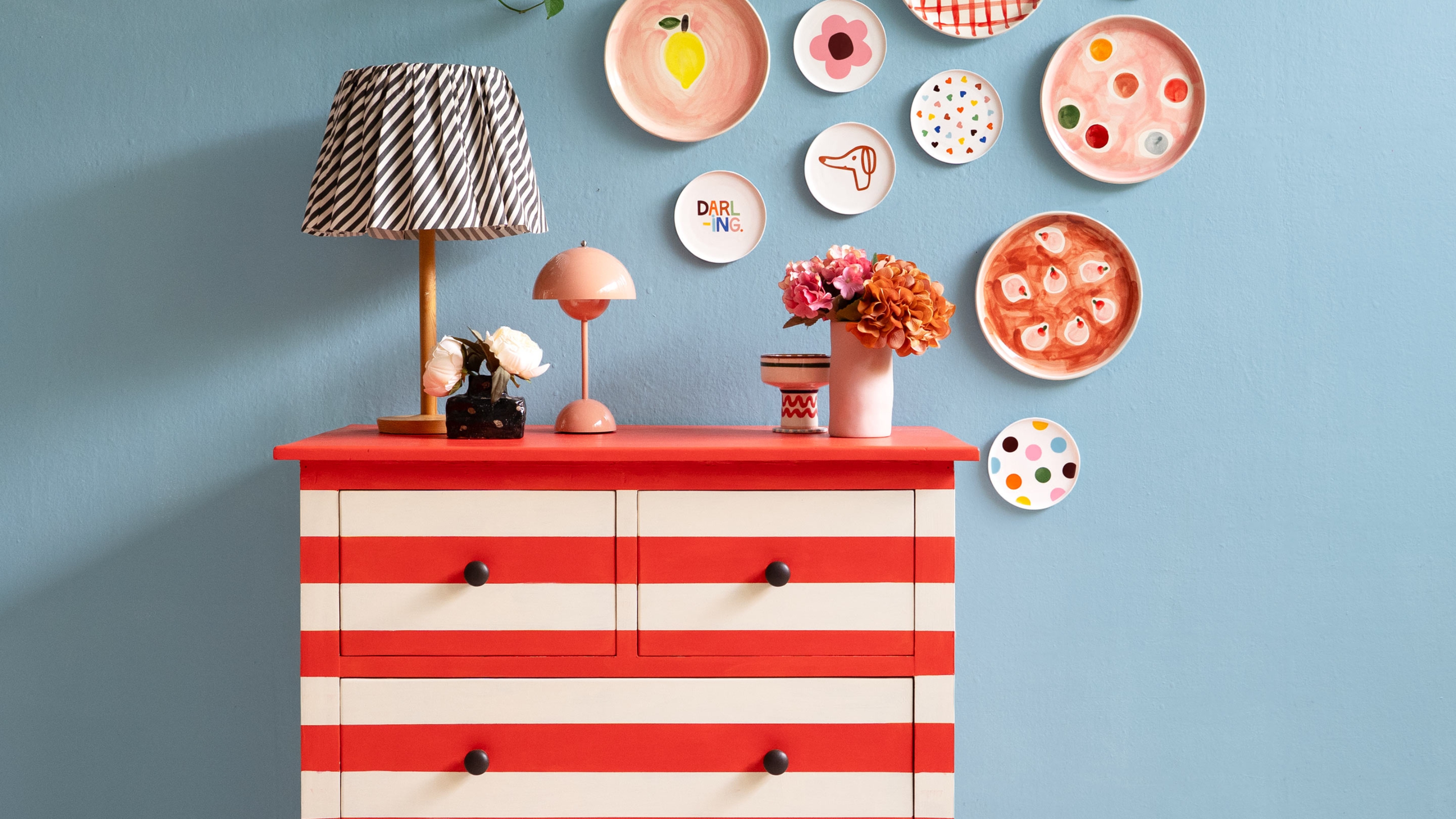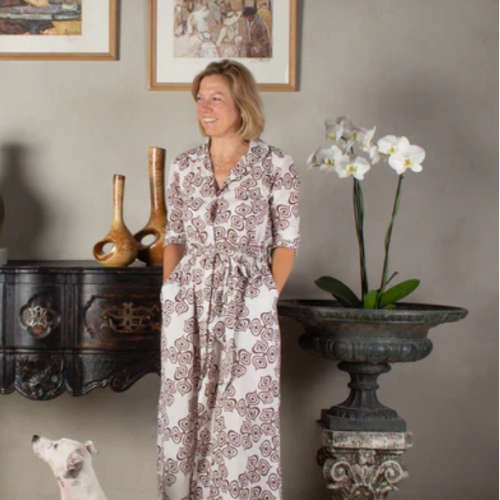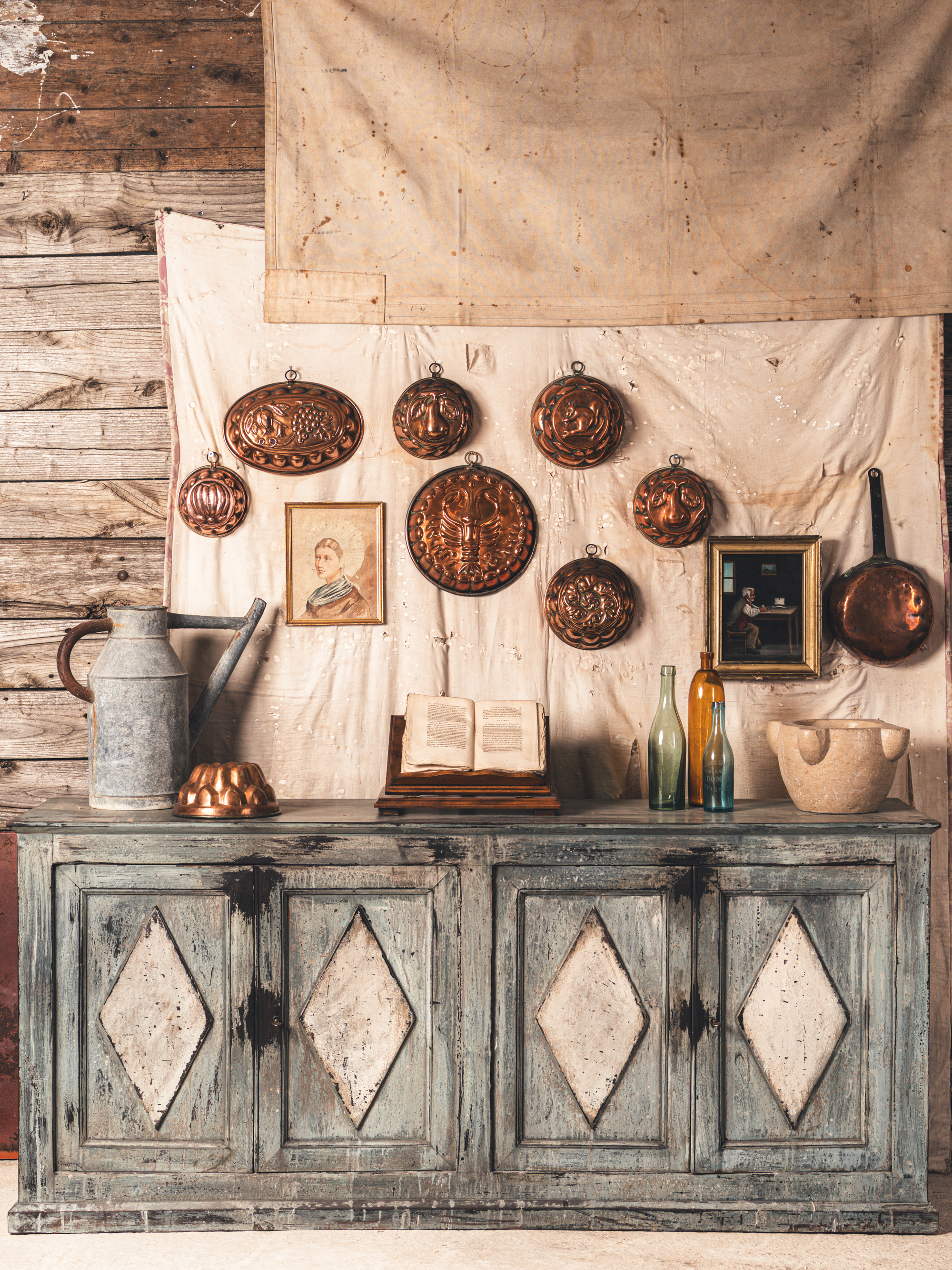Design, Debated — Is It Ever Considered Acceptable to Paint Antique Furniture?
You may have big DIY plans, but sometimes a little restraint goes a long way, especially when it comes to paint


Just because you can paint something, doesn't mean you should. Anyone who has tried their hand at a DIY has likely learned this lesson the hard way. And nothing stirs up more heated debate in the design world than questioning whether or not it's acceptable to paint antique timber furniture.
Yes — painting over thrifted timber can transform a tired piece, but isn't that patina the whole point? Will those hand-painted stripes make something classic feel cheap? Or at the end of the day, is whatever you want the most important thing?
Plus, knowing how to paint furniture properly can be an art form in itself. From priming to picking the paint and finish, there's a lot that goes into it... and a lot that can go wrong. So, if you're tossing up between whether to paint a piece of antique timber furniture right now or let its patina shine, let the design debate below be your guide.
The Pros

So, you've got the piece you want to paint, but you are hesitant to pick up the brush. Don't stress — it's not always a design mistake. It just depends on the circumstance.
"I would only ever paint over a wooden piece that was not handcrafted," explains Rachel Castle, a Sydney-based artist who regularly paints on thrifted furniture. "If it spent its life cheap and cheerful, I am happy to give it a lick of paint and a few more years' service."
Better yet, painting furniture that has been discarded or donated (also known as 'no-hopers') is a great way to buy furniture more sustainably. "Sometimes we take off the trims to make them more streamlined and neat," adds Rachel. "I love the pieces where there is only room for improvement."
Rachel confides that she's currently very keen to paint an old, "shabby" piano, but is still working out whether this is sacrilegious. "I err from yes to no constantly," she says.
The Livingetc newsletters are your inside source for what’s shaping interiors now - and what’s next. Discover trend forecasts, smart style ideas, and curated shopping inspiration that brings design to life. Subscribe today and stay ahead of the curve.
But, at the end of the day, it's up to you what furniture pieces you paint and which you leave in their original form. However, before you make any potential design faux pas, just ensure that painting the piece will truly elevate your space.

Rachel Castle is an artist based in Sydney, Australia. Rachel's craft focuses on pieces that can adorn a beautiful home — everything from 2D artwork to bedlinens and sweaters. Rachel has much experience DIYing things in the home, and, yes, trying her hand at painting antique timber furniture.
The Cons

But on the flipside, Susannah Cameron, an antiques expert based in Provence, France, says, "I’m here to defend dark wood furniture. It’s gorgeous, and if we keep slapping paint on it, future generations will think mahogany only comes in 'eggshell' and 'greige.'"
And dark antique timber furniture is well and truly on the rise in contemporary interior design trends. "It’s about time we stopped treating dark furniture like it’s brooding in the corner, plotting our downfall," says Susannah. "Many of these pieces are masterworks in timber, with striped marquetry, patina, and grain that deserve to be celebrated, not hidden."
In fact, it's these very qualities that will help you thrift furniture and antiques like a vintage dealer, so why would you want to cover them with a coat of paint?
If you're in the business of preserving the original timber, "A coat of beeswax will feed the wood, give it a gentle lustre, and bring its depth to life," says Susannah. "That glow can then pick up and reflect the light from silver-plated candlesticks, gilded or silver leaf mirrors, and pale glazed ceramics in white, cream, or soft beige."
With the right care and thoughtful styling, an antique piece of furniture can become the luminous anchor of a room, without a single drop of paint.

Susannah Cameron is the co-founder of Chez Pluie, a trusted destination for French antiques, based permanently in Provence. With a particular obsession for antique pottery and a deep knowledge of European decorative arts, she sources soulful, timeworn pieces from brocantes and flea markets across France. Susannah holds a Bachelor of Architecture, Bachelor of Design, and Bachelor of Property and Construction from the University of Melbourne. Her eye for form, patina, and provenance is grounded in design training and years of hands-on experience in the field.

The Verdict
As for my opinion? I'd let the patina of an antique piece shine. I can see the appeal of painting furniture — there are plenty of DIYs that do it so well — but if you're going to do that, then pick up something cheaper, not necessarily made with the same quality as an antique.
And then it's all about the prep. Never paint furniture without sanding first ("Lightly but diligently, it’s the key to getting good paint coverage," says Rachel), fill any holes, gaps, or cracks, and make sure you're using the right paint.
"It's a lot of work, easy to get wrong, and not nearly as romantic as it sounds," warns Susannah. But painting IKEA furniture or something similar? That comes without the convoluted moral debate. And here are a few pieces ready and primed for a lick of paint.

IKEA's Billy Bookcase is designed for DIY. I have one I've personally (and proudly) painted a bold red, and it's perfect.
While we're on the subject of mistakes that could be made while antique shopping, you may want to familiarize yourself with all the things you should never buy at a thrift store.

Olivia Wolfe is a Design Writer at Livingetc. She recently graduated from University of the Arts London, London College of Communication with a Masters Degree in Arts and Lifestyle Journalism. In her previous experience, she has worked with multiple multimedia publications in both London and the United States covering a range of culture-related topics, with an expertise in art and design. At the weekends she can be found working on her oil paintings, reading, or antique shopping at one of London's many vintage markets.

